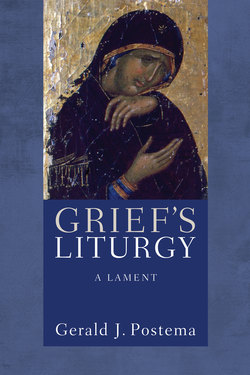Читать книгу Grief’s Liturgy - Gerald J. Postema - Страница 5
На сайте Литреса книга снята с продажи.
Preface
ОглавлениеLinda died a little more than a year ago. I gathered into this lament some of the thoughts, images, poetry, and music that sat with me like gentle good friends as I grieved. I call it “grief’s liturgy,” relying on the original Greek meaning of the word liturgy—the work of the people, which, of course, is commonly associated with the people’s work of worship. There is, perhaps, an element of worship in this lament, but the emphasis is on work. The following pages give expression to a year’s hard work of grieving. It is a record of one person’s grieving. But over the course of the year I have gradually come to learn that no matter how isolated I felt, I was never truly alone in my grief. It takes a community to grieve the loss of a loved one, and the community of people who loved Linda grieved with me. So, in a way, “grief’s liturgy” is the record of a people’s work of grieving seen through the experience of a person at its center.
This grief is expressed as a lament, rather than as a chronicle or narrative. This lament may share something with the expressive nature of a threnody (hymn of mourning), but it is, I fear, less refined and carefully constructed than that characterization might suggest. These pages record the sighs, shrieks, songs, and prayers nearly as they occurred, accompanied by reflections on them, on the events and experiences that prompted them, and on the poetry, prose, and paintings that accompanied me through the year. If it had been possible, I would have also included music, for often music carried me from one moment to the next when nothing else could. But in the place of music, you will, from time to time, run across portions of text that might be sung or accompanied by a performance of associated music.
I have structured the following readings, reflections, and remembrances roughly on the model of the liturgy of hours (the Christian Divine Office), in cycles of lauds (dawn), terce (mid-morning), sext (noon), none (afternoon), vespers (early evening), compline (late evening, the close of the day), and vigil (night). Occasionally, terce, sext, and none are folded into “Daytime.” The liturgy of the hours prescribes that each “hour” begin with Psalm 70:1 (69: 2)—“Be pleased, O God, to deliver me; Lord make haste to help me!” It is a fitting preamble for these reflections, and the careful reader may “hear” this invocation intoned at the opening of each section. Each hour has its own feel or tone, or so it seems to me. Accordingly, I have associated each hour not with a time of day but rather with a theme, focus, or emotional tone, much like the tone composers associate with musical keys. I associate vigil with darkness, silence, solitude, and anxious keeping watch for the morning; lauds with daybreak and renewed promise; terce with movement into the light of day in the presence of others and doing the work of love; sext with elegy and celebration; none with lessons learned from the experience of the day; vespers with twilight’s between-times and so with reflection, and sometimes a sense of my beloved’s presence; and finally, compline with comfort, but also anxiety for what the night brings, and, so, with commending one’s soul to divine safekeeping. Compline is followed again, of course, by vigil and its sometimes terrifying night thoughts.
The designations at the beginning of each entry alert the reader to the tone or mood of the entry to follow. But the order of the “hours” is not rigidly followed, as is fitting for the irregular movement of grief. Likewise, the designated themes of the entries are meant to be only rough suggestions and are not meant to exclude other possibilities. The “days” offer a cycle of such themes and tones, building on and sometimes referring to previous “days” and “hours,” but not proceeding as an unfolding progression. Lament is characterized more by juxtaposition than linear movement; so sudden, sharp changes of mood or thought and even inconsistency are inevitable.
I wish to express my gratitude to the Duke Institute on Care at the End of Life for its generous support of this project and to Brett McCarty for help in preparing this work for publication.
August 13, 2009
Ordinary Time
Chapel Hill, North Carolina
